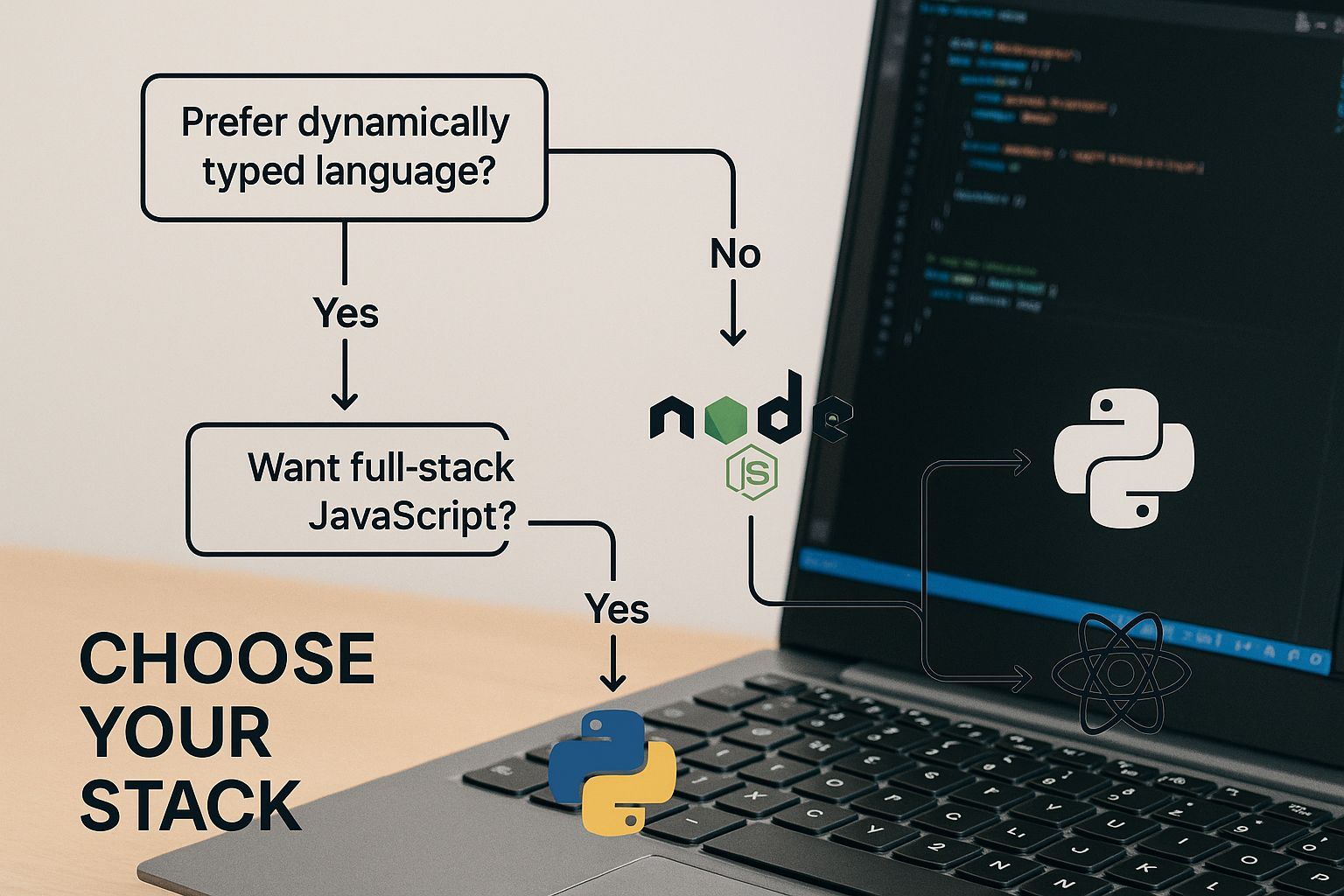So, what exactly is rapid web app development? It's really an approach that puts speed and quick, iterative changes at the forefront of the building process. The goal is to get a functional application up and running in a matter of weeks, not months or years. By blending flexible planning, early prototyping, and constant user feedback, this method delivers value way faster than old-school development, giving businesses a serious leg up on the competition.
Why Speed Is the New Standard in App Development

In a market where good ideas have a frustratingly short shelf life, long development cycles have become a massive business risk. Companies just can't afford to stick with timelines that stretch out for months on end. The demand for digital solutions that work now is forcing a major rethink.
This isn't just about developers typing faster; it’s a complete shift in mindset.
Think of it this way: traditional development is like building an old, winding railroad. It’ll get you there eventually, but it takes its sweet time. Rapid development is the high-speed bullet train—it's built for efficiency, a direct route, and immediate impact.
Adopting a Value-First Mindset
This modern approach isn't some passing fad; it's a direct response to how the market actually works. The global rapid application development (RAD) market is on track to hit around $85.7 billion by 2025, which is an incredible annual growth rate of 28.1%.
The numbers tell the story. Traditional methods can easily take six to twelve months and cost over $100,000 for a basic app. In stark contrast, RAD platforms can push out similar applications in just two to four weeks, slashing development costs by about 70% while often improving the final product. You can find more insights on the market impact of rapid development tools and how they're changing the game.
The core idea is simple but incredibly powerful: get a working product into your users' hands as fast as you can. This opens up some huge advantages:
- Faster Time-to-Market: You can launch your app while the opportunity is still red-hot, leaving competitors stuck in their endless development cycles.
- Early User Feedback: Instead of guessing, you get real-world insights from actual users. This helps you validate your ideas and focus on features people actually want.
- Reduced Development Risk: Building in small, quick steps means you avoid sinking a ton of time and money into a product that might ultimately miss the mark.
- Quicker Path to Revenue: A faster launch means you start making money and seeing a return on your investment that much sooner.
Rapid web app development is a strategic mindset focused on delivering value, gathering feedback, and iterating quickly to gain a competitive edge. It's about building the right product, not just building the product right.
This guide will walk you through the principles, workflows, and tools that make this accelerated approach tick. You’ll learn exactly how to get from a simple idea to a full-blown launch with speed and confidence.
Understanding the Philosophy Behind Rapid Development
At its heart, rapid web app development isn’t about a specific tool or technology. It’s a complete shift in mindset. Think about the old way of building software, the "waterfall" method. It was a long, rigid process where you couldn't start one phase until the previous one was 100% finished.
This often meant spending months locked away planning and building, only to finally launch a product that nobody wanted. Rapid development flips that entire script. It's built on the idea of embracing change and learning as you go.
Instead of aiming for one massive, perfect release, you focus on scoring small, meaningful wins along the way.
The Chef and the Recipe Analogy
Let's imagine a chef trying to invent a revolutionary new recipe. The old-school approach would be to spend six months in a secluded kitchen, planning every ingredient and step down to the last detail, without letting a single person taste it. When it's finally "perfect," they unveil it.
But what happens if the customers hate it? That's six months of effort down the drain.
A rapid development approach is more like a modern, agile chef. On day one, they whip up a small tasting sample—a core version of their idea. They give it to a handful of diners and ask, "What do you think? More spice? Too much salt?"
With that instant feedback, the chef tweaks the recipe and serves another small sample the next day. This continues, with the dish evolving and improving with each small test. This is exactly what we call building a Minimum Viable Product (MVP).
An MVP isn't a cheap or unfinished product; it's the smartest version. It has just enough features to solve a core problem for early users, who then give you the exact feedback you need to build what comes next.
This cycle of building, testing, and learning is the engine of rapid development. It ensures that what you end up with is something people will actually use and love.
Embracing Progress Over Perfection
This whole approach is built on a few core principles that directly challenge the old way of thinking. Getting these concepts right is key before you even touch a tool. The goal is to deliver real, functional value to users as fast as possible, not to ship a flawless, feature-packed app on the first go.
Three ideas really drive this philosophy:
- Iterative Cycles: Development is broken down into short, repeatable bursts, often called "sprints." Each sprint delivers a small, working piece of the application that can be tested and reviewed. This turns an overwhelming project into a series of manageable steps.
- Continuous Feedback: Feedback isn't an afterthought you collect at the end. It's a constant conversation with users, stakeholders, and your own team. This keeps the project on track and prevents you from wasting time building the wrong things.
- Customer Collaboration: The user isn't just a faceless consumer waiting at the finish line. In rapid development, they're an active partner. Their insights and experiences directly shape how the product evolves.
By focusing on these principles, teams slash the risk of building something nobody wants. Instead of making one giant, risky bet on a big launch, they make a series of small, smart bets. That’s the real reason why rapid web app development delivers better results, faster. It’s a practical, user-first strategy that’s perfectly suited for the speed of today's market.
Choosing Your Path to Faster App Development
Once you’ve committed to the idea of building fast, the big question becomes: how? There's no single magic bullet for rapid web app development. Instead, you have a few different routes you can take, each with its own set of trade-offs and sweet spots.
Think of it like planning a trip. Your choice of transportation really depends on where you're going, how quickly you need to get there, and what kind of experience you want along the way.
- No-Code: This is like hopping on a high-speed train. It’s incredibly fast, follows a set path, and gets you to common destinations with almost no effort. You don't need to be a mechanic; you just get on and go.
- Low-Code: This is more like driving a high-performance car with a fantastic GPS. You get a powerful, pre-built machine, but you’re in the driver's seat, able to take detours and customize your journey. It offers more freedom than the train but requires some know-how.
- Modern Coding Frameworks: This is like being an engineer designing a custom-built rocket. You have total control over every component, from the engine to the navigation system, allowing you to go anywhere and do anything. It demands deep expertise but offers limitless potential.
Picking the right path is one of the most important decisions you'll make. It’s all about finding the right balance between your project goals, your team's skills, and your timeline.
H3: No-Code Platforms: The Ultimate Accelerator
No-code platforms are built from the ground up for pure speed and simplicity. They give non-technical founders, marketers, and product managers the power to build real, working web apps using drag-and-drop visual editors. You're essentially snapping together pre-built Legos to create something new without ever touching a line of code.
This approach is a game-changer for building Minimum Viable Products (MVPs), internal company tools, or straightforward client portals. The main trade-off? You have to play within the rules of the platform. While they get more powerful every day, you might hit a wall if you need highly specialized or complex features.
The visual guide below breaks down how to pick the right tech approach based on your project's needs.

As the infographic shows, the best route often comes down to your team's technical comfort zone and how ambitious your app's features are.
H3: Low-Code: Bridging The Gap
Low-code platforms carve out a fantastic middle ground. They deliver the visual, high-speed development of no-code but also pop the hood open for developers to write custom code where it counts. This makes them perfect for more sophisticated business apps that need custom logic but can't afford a lengthy development cycle.
Developers can use a low-code platform to automate all the repetitive, boilerplate work. This frees them up to focus their brainpower on the unique, high-value features that truly set the app apart. It’s a powerful hybrid that gives you speed without the hard limits of a pure no-code world.
H3: Modern Coding and AI Assistance
When you need absolute control, a one-of-a-kind user experience, or an app built to scale to millions of users, traditional coding is still king. This is the domain of professional developers using powerful frameworks like React or Vue, often paired with backend services like Firebase.
But "traditional" doesn't mean slow anymore. The arrival of AI-powered coding assistants has completely changed the game.
AI tools like GitHub Copilot don't replace developers; they supercharge them. The AI acts like an expert co-pilot, handling the tedious tasks and freeing up the human engineer to focus on smart architecture and creative problem-solving.
This AI-assisted workflow combines the total flexibility of custom code with an incredible new layer of speed. It makes rapid web app development a reality even for the most complex projects. Whether you're a startup founder or a coding veteran, knowing the fastest way to get your idea in front of users is a crucial skill. You can learn more about how to build and launch an MVP fast and start getting that vital feedback.
H3: Comparing Rapid Development Approaches
To help you decide, this table breaks down the key differences between these three paths. It compares the skills you'll need, the speed you can expect, and what each approach is genuinely best for.
| Approach | Required Skill Level | Development Speed | Customization Level | Best For |
|---|---|---|---|---|
| No-Code | Beginner (Non-Technical) | Fastest | Low | MVPs, simple websites, internal tools, and landing pages. |
| Low-Code | Intermediate (Some coding knowledge helps) | Fast | Medium | Custom business apps, internal workflows, and complex portals. |
| Modern Coding with AI | Advanced (Professional Developer) | Moderate | High | Scalable SaaS products, complex platforms, and unique user experiences. |
In the end, there's no single "best" path—only the one that gets your product into the hands of users as quickly and effectively as possible. By understanding these options, you can make a smart, informed decision that lines up perfectly with your vision and your resources.
The Essential Toolkit for Modern Web App Builders
Having a great idea is one thing; turning it into a real, working product is another challenge entirely. That's where your toolkit comes in. The world of rapid web app development runs on a new breed of platforms and frameworks, all built to get you from concept to launch faster than ever.
This isn't just a laundry list of every tool on the market. Instead, we'll look at a few proven leaders in each category. The goal is to give you a clear map of the landscape so you can explore with confidence and find the right fit for your project.
No-Code Platforms for Visual Creators
No-code platforms have completely changed the game, giving entrepreneurs, designers, and anyone with a good idea the power to build without writing code. These tools are all about visual, drag-and-drop interfaces that let you construct complex user flows and beautiful UIs.
Think of them as website builders on steroids—they look simple on the surface but have the horsepower of a real application underneath.
- Bubble: A true giant in the no-code world. Bubble gives you everything you need to build fully functional web apps with user accounts, databases, and complex logic. It’s a go-to for founders building MVPs, marketplaces, and social network-style platforms.
- Webflow: Best known for creating jaw-droppingly beautiful websites, Webflow has also grown into a powerful web app builder. It shines when you combine its world-class design controls with its robust CMS and user accounts, making it perfect for things like client portals or content-heavy applications.
Here’s a peek inside Bubble's editor. It shows how you can visually string together application logic without ever opening a code editor.
This is the promise of no-code in a single image: turning abstract logic into something you can see, click, and build.
Low-Code Platforms for Enterprise Speed
Low-code platforms are the perfect middle ground, blending the simplicity of no-code with the raw power of custom development. They’re designed for professional dev teams who need to ship enterprise-grade apps at lightning speed. These tools offer visual builders to handle the routine stuff, but also let developers jump in and write custom code for the tricky, specialized parts.
Low-code isn't about replacing developers; it's about making them more powerful. By automating the boilerplate, these platforms let your engineering team focus on the unique, high-value features that actually move the needle.
These platforms are particularly strong in corporate settings where new apps need to play nicely with legacy systems and meet tough security and scaling requirements.
- OutSystems: A leader in the enterprise low-code space. OutSystems is built for creating, deploying, and managing sophisticated, mission-critical applications with a heavy focus on security and performance.
- Mendix: Another top-tier platform, Mendix is all about fostering collaboration between business stakeholders and IT. It supports the entire app lifecycle, from brainstorming to long-term operation, making it ideal for big, ambitious digital projects.
Backend-as-a-Service for Professional Developers
What if you’re a developer who loves building the frontend but hates the grind of setting up a backend? That’s where Backend-as-a-Service (BaaS) comes in. These platforms give you a ready-made backend infrastructure—database, user authentication, file storage, and serverless functions—right out of the box.
This completely sidesteps the need to build and manage your own servers, which is often one of the most time-consuming parts of a project. You just connect your custom frontend to the BaaS API and start building. Of course, knowing what you need from a backend is half the battle; our guide on defining clear client requirements can help you nail that down first.
- Firebase: Backed by Google, Firebase is arguably the most popular BaaS platform. It’s an all-in-one toolkit with real-time databases, powerful authentication, and even AI features with Gemini, making it incredibly easy to build scalable apps.
- Supabase: Often called the "open-source alternative to Firebase," Supabase offers a very similar feature set but is built on top of the rock-solid foundation of PostgreSQL. Developers love it for the control it provides and for avoiding being locked into a single vendor.
By picking the right tool from the right category, you're not just choosing technology—you're choosing a workflow designed for speed. This is how you take your app from a sketch on a napkin to a live product in the hands of users.
How Progressive Web Apps Accelerate Delivery

If you're looking for a perfect real-world example of rapid web app development, look no further than Progressive Web Apps (PWAs). They brilliantly combine the reach of a website with the immersive feel of a native mobile app.
Think of a PWA as a website that’s been given a serious upgrade. It starts out in a browser just like any other site, but as a user engages with it, it can be "installed" directly onto their home screen. No app store required.
Once there, it behaves just like any other app. It can work offline, send push notifications, and load in a flash. For the user, the entire process is smooth and painless, which is a huge victory for getting people to actually use your product.
Build Once, Deploy Everywhere
The real magic for developers is the efficiency. With a PWA, you’re not juggling separate, complex codebases for iOS, Android, and the web. You build it once. That single codebase powers the experience across every platform.
This isn't just about saving time upfront; it completely changes the game for ongoing maintenance. When you need to push an update, fix a bug, or roll out a new feature, you do it in one place. Every user gets the update instantly, and you get to sidestep the slow, unpredictable app store review process entirely.
The core benefit of PWAs is eliminating redundancy. One team, one codebase, and one deployment pipeline serve your entire audience, allowing you to focus resources on building better features instead of managing platform differences.
The Business Case for PWAs
The numbers tell a compelling story. Companies that adopt PWAs aren't just saving time; they're seeing real, measurable results that impact their bottom line.
They are also significantly cheaper to build, often costing 3 to 8 times less than developing a traditional native app. It’s no surprise that by late 2023, over 54,000 websites had made the switch. The business impact is clear: companies often see conversion rates jump by up to 50% and have reported user retention climbing as high as 180%. You can dig deeper into these web development statistics and trends to see just how effective this approach can be.
For any business that needs to deliver a high-quality, app-like experience without the massive budget and long timelines of native development, PWAs are a smart, strategic move. It's a proven way to get your product into your users' hands, faster.
Building Cross-Platform Apps in Record Time
The old dream of "write once, deploy everywhere" has finally become a practical reality, and it's a huge part of what makes rapid web app development possible today. Think of it like having a single, master blueprint that lets you build the same house in different neighborhoods—one for iOS, one for Android, and another for the web—all at the same time.
That's exactly what frameworks like React Native and Flutter let you do. Instead of painstakingly building three separate apps from the ground up, your team focuses on a single, shared codebase. This one source of truth is then compiled to run natively on each platform, which, as you can imagine, absolutely slashes the initial development timeline.
One Codebase to Rule Them All
The beauty of this unified approach goes way beyond just getting to launch day faster. Maintenance, which can be a real resource drain, becomes incredibly straightforward. When a bug pops up or you're ready to add a new feature, you make the change once, and it propagates across all platforms.
This gives you two massive advantages:
- Less Engineering Hassle: You don't need separate, specialized teams for iOS, Android, and web all trying to stay in sync. A single, focused team can own the entire product.
- A Consistent User Experience: Your app looks, feels, and works the same whether your user is on an iPhone, a Samsung Galaxy, or their laptop. That kind of consistency is crucial for building a brand people trust.
When you stop doing the same work three times over, you free up your team to focus on what really matters: innovating and building better features, not just juggling platform-specific chores.
The Market is Betting Big on This
This isn't just a niche strategy; the industry has gone all-in on this model. For anyone building modern apps, cross-platform development has become the go-to for delivering experiences that work seamlessly everywhere.
The numbers don't lie. The market for these frameworks is projected to hit $50 billion in 2025 and is expected to grow at a compound annual rate of about 20% through 2033. This explosion in growth shows just how much demand there is for tools that maximize code reuse and cut down on development costs. You can dig deeper into the cross-platform app development statistics to see just how strong this trend is.
For any team that needs to be fast, efficient, and scalable, a cross-platform approach isn't just a nice-to-have anymore. It’s a core strategy for staying in the game. It lets you reach the biggest audience with the least amount of effort, turning a great idea into a real product in record time.
Frequently Asked Questions About Rapid Development
When teams start thinking about moving to a faster development model, a few questions always seem to pop up. Let's clear the air on these common concerns so you can move forward with a solid plan and the right expectations for your first rapid web app development project.
This is all about building smarter, not cutting corners.
Does Rapid Development Mean Lower Quality?
Not at all. In many cases, it’s quite the opposite—modern rapid development can lead to higher-quality apps. The whole approach is built around getting continuous feedback and leaning heavily on automated testing. This means you catch and squash bugs much earlier than you would with a traditional, drawn-out process.
Speed isn't achieved by sacrificing quality. It comes from using pre-built, tested components, relying on proven architectural patterns, and cutting out all the repetitive manual grunt work. The focus stays on efficiency, making sure that crucial elements like security, performance, and user experience are baked in from the very beginning.
The point of rapid development isn't to slap together a flimsy product. It's to build a solid, validated product through a fast, iterative cycle that cuts down risk and delivers real value to users.
Can Rapid Methods Handle Complex Apps?
Absolutely. While no-code tools are fantastic for MVPs and simpler jobs, enterprise-level low-code platforms are specifically designed for the heavy lifting required by complex, mission-critical systems. They come packed with powerful integrations, sophisticated logic, and the ability to scale for huge numbers of users.
In the same way, professional developers working within an Agile framework can build incredibly detailed and complex applications. An app's ability to handle complexity isn't limited by the development philosophy; it's defined by the underlying architecture and technology choices. You can build a simple app slowly or a complex one quickly—it all comes down to the strategy and tools you put in place.
How Can My Team Get Started?
The best advice is always to start small. Find a low-risk internal project to use as a test case, something like a simple admin dashboard or an internal utility tool. This gives your team a safe sandbox to try out a new low-code platform or run their first agile sprint without the pressure of a big public launch.
The goal is to foster a mindset of experimentation. Focus on getting a small piece of working software out the door as fast as you can.
Here’s a simple game plan:
- Select a Pilot Project: Pick something that's useful but not a make-or-break system.
- Choose a Tool or Method: Try out a no-code platform or commit to your first two-week sprint.
- Build a Small, Usable Feature: Zero in on one core function and make it work perfectly.
- Gather Feedback and Iterate: Get it in front of a few users and let their feedback tell you what to do next.
Once your team sees the benefits for themselves, you can build on that momentum and start applying these principles to bigger, more critical projects. If you'd like to talk through your specific needs, feel free to contact our team of development experts for some one-on-one guidance.
Article created using Outrank






















